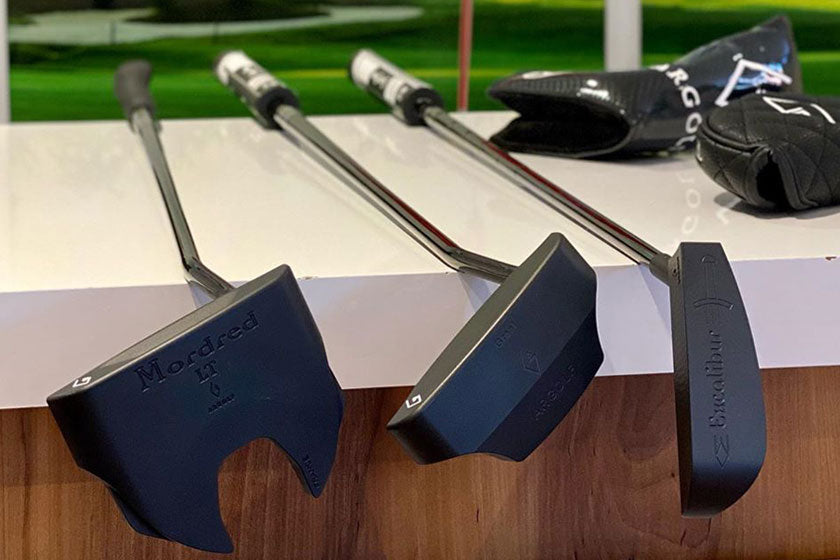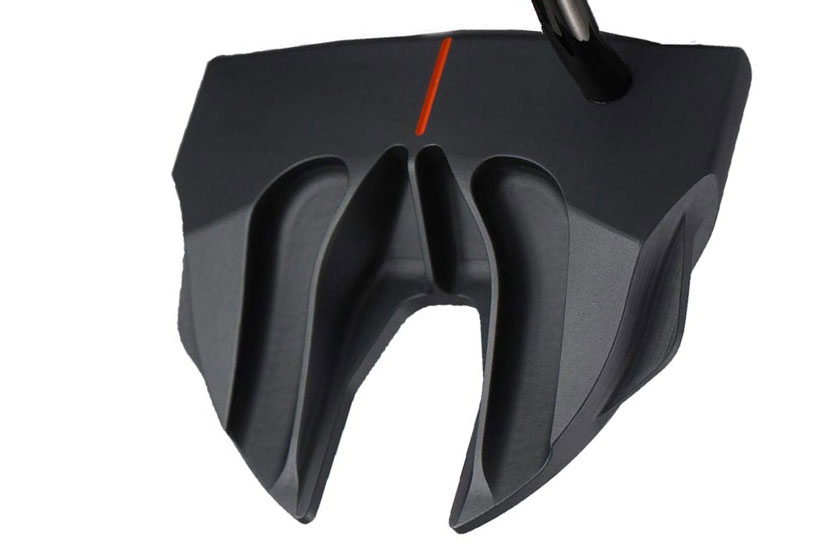
What happens when you decide to buy yourself a new putter? There are most likely a bunch of questions that come rushing to your head. Even though you may want to get yourself the best-looking putter, you also need to take into consideration two very important variables that will affect your putting stroke: design and weight.
So how does design and weight affect your putting stroke? ARGOLF always strives for a technical approach, which is why we decided to split this into two parts: part one, the design of your putter; part two, the weight of your putter.
A PUTTER’S DESIGN HAS A DIRECT EFFECT ON ITS AIM
The explanation is not that simple. Usually the golfer’s brain is to blame for the aim, but it’s not entirely its fault, as the website GolfWRX mentions: “97 percent of golfers think they are aiming at their target when in reality they are aiming somewhere else.” Essentially, it all depends on the design of the putter at play. So how do you fix this as a beginner, amateur or pro golfer? You will be relieved to know that there is a really easy fix: do your research and choose your weapon properly.
Most of you already know that there are various types of putters, blades, half mallets and mallets. There’s a reason why they are so different from one another and ARGOLF finally has an explanation for this. Each putter design serves a specific purpose when it comes to your stroke. It is now clear that the roundness of a club’s head plays a big part in the way a golfer sees their aim. Nowadays, we can affirm that the rounder a putter’s head, the more likely it will cause the golfer to aim to the right. However, take a head that has a minimal roundness, and the golfer will tend to aim more to the left. Also, keep in mind that this explanation is meant for a right-handed player; the theory is reversed for a left-handed golfer. Oh, and one more thing, this might come to you as a surprise, but the more sight lines on your putter, the more you will aim to the left. They also tend to increase or decrease the loft of a putter, whether they are placed at the back or the front of the putter, respectively.
Don’t know where to look or what putter to start with? No problem at all. If you have a misalignment on the right, grab yourself a blade putter from ARGOLF’s Collection. We recommend trying the ARTHUR; it’s a real legend. On the other hand, if your alignment problem is on the left, a putter like the PENDRAGON should do the trick.
There is a reason why alignment is so important. When a player isn’t properly aimed to hit the ball on the intended line, there is a need to make last second compensations, which leads to inconsistency in your stroke. The better a player can orient themselves with their intended target, the less adjustments are needed to hit the ball on line.
DESIGN IS IMPORTANT, BUT WEIGHT IS EVEN MORE IMPORTANT
As an avid golfer, you may have noticed that the 4.25 inches-wide hole is sometimes too small when you arrive too fast. Green speed plays a very important role in the number of strokes that you need to score. To control the speed of your ball, you need to control your putter. The weight of your putter is the key factor in how it will react when you use it. As humans, we are programmed to use our hands as “scales” to figure out how much effort we need to put in lifting various objects, and the putter is one of them. To get the best result out of your stroke, your brain needs the right information: the weight of the club you are playing with, distance to the target and speed of the stroke.
You may already know from the article on the Moment of Inertia, that the weight of a putter’s head affects greatly its performance. On average a putter is weighted at 350 grams, but a lighter or heavier weight may be better suited for you. Now, let’s talk about how weight distribution affects your putting stroke. Each putter has a different weight balance and there are two main different types at ARGOLF:
TOE-DOWN BALANCED
To give you an example, a toe-down/toe-heavy putter is usually found in the classic blades collection. Take the EXCALIBUR blade putter from ARGOLF, this legendary blade is a toe-heavy putter with a head that weighs 370 grams and shows no alignment feature, making it an ideal choice for pure feel players. So how does a toe-heavy putter affect your stroke? For starters, your clubhead’s center of gravity is not aligned with the force you exert on the club. This force creates a torque that is meant to open the club’s face and intuitively the golfer is supposed to apply a counter-torque to square the face at impact. Basically, this type of putter would be more adequate for a golfer with an arced stroke.

FACE BALANCED
You probably guessed it right; a face balanced putter is one where the face of your putter points upward. The most representative example is probably the famous MORDRED. With its winged design and sophisticated looks, the club’s face points upward when resting on a flat surface. This putter’s head is slightly less heavy than EXCALIBUR’s, weighing 360 grams, but shows a low center of gravity, boasting the highest Moment of Inertia in the mallets of ARGOLF’s Collection. How does a face balanced compare to a toe-down balanced putter? The force exerted by the golfer is in front of the center of gravity which creates a stable clubface during the stroke. With a face balanced putter, there is no need to adjust the torque during the swing.

So which one corresponds to the putter you currently own? Simple, all you have to do is set the putter’s shaft on a flat surface like a table and see how the head comes to rest. Depending on the putter you own, you may have to consult a fitting expert to see if the club is properly fitted for your stroke.
GREEN SPEED IS ALSO RESPONSIBLE FOR YOUR STROKE
In addition to the weight balance of your putter you may also want to know the speed of the green on which you play most frequently. As mentioned earlier, it is part of the equation to proper fitting. So how does the weight of your putter respond to different green speeds?
There is a very mathematical explanation for this. Maybe we’ll just quickly go over it… Essentially, it involves the equation for kinetic energy and how it shows that velocity of the stroke has a greater impact on energy than the mass of your putter. What does this mean?
Basically, the heavier your putter, the slower your swing will be. When you are used to playing on fast greens you will probably not notice it. However, if one morning you decide to play on a slower green than usual, you will see that your ball will not respond the same way.
Any pro golfer will tell you that the weight of the club head needs to match your tempo for consistent distance control. Some players do better with a heavier head where they have a slower/longer pendulum type stroke. In this situation, they feel the weight of the head does the work for them. However, others prefer a lighter head so they can make a shorter/faster accelerating stroke into the ball. Having the proper head weight tailored to your game will help optimize your distance control on the greens.
THE “Y” WORD IS SCARY, BUT NOT TO WORRY!
You will say: “how dare you mention it on ARGOLF’s website?!” The reality is that you are safe from it with the right combination of equipment. This article has provided you with the first steps to improving your putting stroke. Overall, just make sure that when you select your next putter, you take all factors into consideration: design, weight and even the location where you play most frequently.




Leave a comment